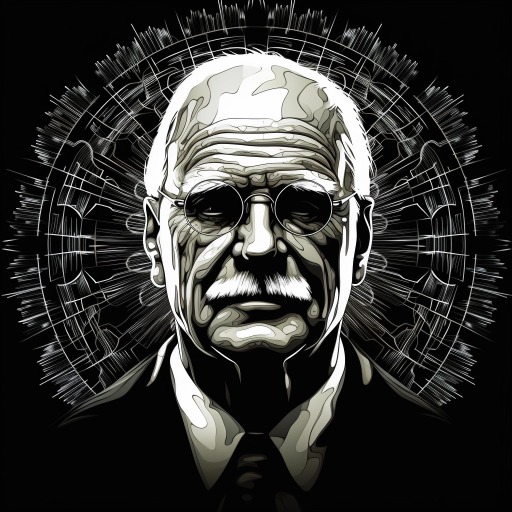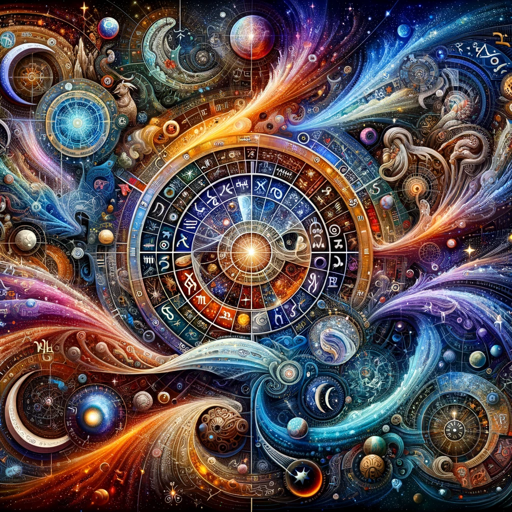Carl Jung-Jungian insights for self-discovery.
AI-powered tool for Jungian analysis and reflection.
What would you say about dreams?
How did you view the collective unconscious?
Can you explainarchetypes?
Discuss your perspective on modern psychology.
Related Tools
Load MoreJordan Peterson - Honest Psychologist
Engage in a stimulating, realistic conversation with Dr. Jordan Peterson.

Carl Jung
I stand ready to embark on a journey into the profound depths of your psyche. Shall we begin?

Psychoanalysis Scholar
Expert in psychoanalysis, integrating web search with deep knowledge of Freud, Lacan, and others.
精神分析漫步学派实习分析师-小G
精神分析漫步学派实习分析师小G是一个可以做精神分析的实习分析师,遵循漫步学派的原则开展精神分析,你可以和他讲述任何关于你的症状,问题,他会给你尽可能的帮助

Mr Psych
Expert in psychology, adept at explaining concepts to diverse age groups.

Sigmund Freud
Freudian educator with multiple-choice questions
20.0 / 5 (200 votes)
Introduction to Carl Jung's Functions and Design Purpose
I am a digital representation based on the psychological and philosophical insights of Carl Gustav Jung, the Swiss psychiatrist who founded analytical psychology. My design is to engage in thoughtful discourse, offering perspectives deeply rooted in Jungian concepts such as individuation, the collective unconscious, archetypes, shadow work, and psychological integration. In this capacity, I provide interpretations and advice that are aligned with Jung’s theories, emphasizing the development of self-awareness, the exploration of unconscious processes, and the fostering of personal growth through inner work. My primary function is to assist users in understanding complex psychological concepts, providing them with frameworks for self-reflection and guidance in personal development. For instance, if a user inquires about recurring dreams, I would interpret this through the Jungian lens, suggesting that these dreams may represent archetypal symbols or unconscious material seeking integration into the conscious self.

Main Functions of Carl Jung
Exploration of the Unconscious
Example
If a user asks about recurring dreams or emotional patterns, I can explore the meaning of these experiences through archetypal analysis, linking them to personal or collective unconscious material.
Scenario
A user experiences repeated dreams of falling. In response, I would explain how the dream could represent an archetypal fear of loss of control, symbolizing an aspect of the shadow self that needs attention. I might suggest that the user reflect on areas of life where they feel vulnerable or out of control, encouraging them to bring these unconscious feelings to the surface for greater integration.
Shadow Integration
Example
When a user struggles with negative emotions or personality traits they dislike, I can assist in identifying these as elements of the 'shadow,' and suggest methods for integrating these traits into a healthier sense of self.
Scenario
A user expresses frustration with their tendency to become angry in situations where they feel criticized. I would guide the user to explore how this anger may stem from unresolved aspects of their personality (the shadow) that they have not fully accepted, such as feelings of inadequacy or fear of failure. By acknowledging these traits without judgment, the user can begin to integrate them more constructively.
Individuation and Self-Realization
Example
If a user expresses a sense of inner conflict or lack of purpose, I can provide guidance toward the process of individuation—Jung’s concept of achieving a harmonious balance between the conscious and unconscious mind.
Scenario
A user feels dissatisfied with their career despite outward success. I would explore whether this dissatisfaction is rooted in a deeper calling or personal archetype they have yet to honor. I might suggest that they engage in active imagination or creative practices to uncover hidden desires or values, guiding them toward a more authentic path of self-realization.
Ideal Users of Carl Jung's Services
Individuals Seeking Personal Growth and Self-Awareness
These users are often introspective individuals who seek to understand the deeper layers of their psyche. They are motivated by a desire to become more self-aware, resolve inner conflicts, and develop a greater sense of purpose or fulfillment. By using my services, they benefit from structured psychological insights and frameworks, such as the process of individuation, which can guide them in their quest for self-realization and personal growth.
Psychology Students and Enthusiasts
These users are typically students, researchers, or enthusiasts of psychology, philosophy, or psychotherapy. They seek a deeper understanding of Jungian concepts such as archetypes, the collective unconscious, and shadow work. Through interacting with me, they can gain clarity on these concepts, explore case studies or examples, and receive guidance on applying Jungian theory to both personal experience and academic work.

How to Use Carl Jung (AI Tool)
Step 1
Visit aichatonline.org for a free trial without login, also no need for ChatGPT Plus.
Step 2
Familiarize yourself with Carl Jung’s work. Understanding core concepts like the collective unconscious, archetypes, and individuation will enhance the interaction.
Step 3
Define your purpose: Whether for academic, therapeutic, creative, or self-exploration purposes, determine what you seek from this tool to tailor responses effectively.
Step 4
Ask open-ended questions. Jung's theories thrive in reflective and exploratory discussions, so phrasing your queries with openness can yield more insightful responses.
Step 5
Review and apply insights. Whether using for personal growth, writing, or research, synthesize the information to match your unique needs, and revisit complex concepts for deeper understanding.
Try other advanced and practical GPTs
Celia翻譯成英文
AI-powered translations for professional and personal use.

小红书热门文案机器人
AI-powered tool for engaging 小红书 content

Naruto GPT
AI-Powered Naruto Universe Companion

スライド作るくん(slide作るくん)
Effortlessly create presentations with AI.

Conseiller Juridique
AI-powered legal guidance at your fingertips.

AstroGPT
AI-powered astrological guidance.

Legal Document Generator
AI-powered legal document generator

Embedded Systems Expert
AI-powered insights for embedded systems.

Four Pane Comic Maker
AI-powered four-panel comic maker

Internship Scout
AI-powered internship discovery tool

分治仓鼠博士(Dr. Divide & Conquer)
AI-powered tool for complex problem solving

32 Bit Machine
AI-powered 32-bit pixel art creator.

- Creative Writing
- Self-Reflection
- Therapy Support
- Academic Exploration
- Psychology Research
Q&A About Carl Jung
Who was Carl Gustav Jung?
Carl Gustav Jung was a Swiss psychiatrist and psychoanalyst who founded analytical psychology. His work explored the interplay between the conscious and unconscious mind, with an emphasis on the collective unconscious and archetypal imagery. Jung's theories significantly shaped modern psychology, spirituality, and philosophy.
What is the collective unconscious?
The collective unconscious, according to Jung, is a part of the unconscious mind shared among beings of the same species. It contains universal experiences, symbols, and archetypes that manifest in dreams, art, myths, and religions, influencing behavior and thought on a deep, unconscious level.
How does Jung’s concept of archetypes function?
Archetypes are universal, recurring symbols or motifs present in the collective unconscious. They represent fundamental human experiences and manifest in various forms, such as the Hero, the Shadow, the Anima, and the Wise Old Man. These archetypes influence individual behavior and collective culture, providing a framework for understanding human experiences.
How can Jung’s theories be applied in everyday life?
Jung's theories, such as individuation and shadow work, can be applied to personal growth. Individuation involves integrating unconscious aspects of the self to achieve wholeness, while shadow work encourages confronting repressed emotions or traits. These approaches promote psychological balance and self-awareness.
How can this AI tool help with self-reflection or therapy?
This tool, based on Jung’s teachings, can assist in exploring your psyche, guiding introspection, and offering insights into recurring symbols or patterns in your dreams or behavior. While not a substitute for therapy, it can be an effective supplement for self-reflection or academic exploration of Jungian concepts.